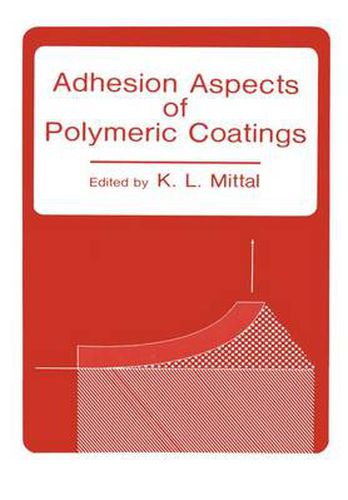Readings Newsletter
Become a Readings Member to make your shopping experience even easier.
Sign in or sign up for free!
You’re not far away from qualifying for FREE standard shipping within Australia
You’ve qualified for FREE standard shipping within Australia
The cart is loading…






This title is printed to order. This book may have been self-published. If so, we cannot guarantee the quality of the content. In the main most books will have gone through the editing process however some may not. We therefore suggest that you be aware of this before ordering this book. If in doubt check either the author or publisher’s details as we are unable to accept any returns unless they are faulty. Please contact us if you have any questions.
This volume chronicles the proceedings of the Symposium on Adhesion Aspects of Polymeric Coatings held under the auspices of the Electrochemical Society in Minneapolis, MN, May 10-15, 1981. This event was cosponsored by the Dielectric and Insulation, and Electrothermics and Metallurgy Divisions. Polymeric coatings are used for a number of purposes, e. g. , decorative, protective, functional (as dielectrics or insulators) and a special application of polymeric (organic) coatings is their use as lithographic materials for making integrated circuit elements. Irrespective of the purpose of the coating, it must adhere well to the underlying substrate. So the need to under stand the factors which influence adhesion of organic coatings and the ways to attain desired adhesion is quite manifest. This Symposium was designed to bring together scientists and technologists interested in the adhesion aspects of polymeric coatings, to provide a forum for discussion of latest findings, and to provide an opportunity for cross-pollination of ideas. The technical program contained a total of 46 papers by authors from various corners of the world. The program comprised both invited overviews and contributed original research papers, as this blend is the best way to present the state of knowledge of a topic. The invited speakers were selected so as to represent widely differ ing disciplines and interests and they hailed from various aca demic and industrial research laboratories.
$9.00 standard shipping within Australia
FREE standard shipping within Australia for orders over $100.00
Express & International shipping calculated at checkout
This title is printed to order. This book may have been self-published. If so, we cannot guarantee the quality of the content. In the main most books will have gone through the editing process however some may not. We therefore suggest that you be aware of this before ordering this book. If in doubt check either the author or publisher’s details as we are unable to accept any returns unless they are faulty. Please contact us if you have any questions.
This volume chronicles the proceedings of the Symposium on Adhesion Aspects of Polymeric Coatings held under the auspices of the Electrochemical Society in Minneapolis, MN, May 10-15, 1981. This event was cosponsored by the Dielectric and Insulation, and Electrothermics and Metallurgy Divisions. Polymeric coatings are used for a number of purposes, e. g. , decorative, protective, functional (as dielectrics or insulators) and a special application of polymeric (organic) coatings is their use as lithographic materials for making integrated circuit elements. Irrespective of the purpose of the coating, it must adhere well to the underlying substrate. So the need to under stand the factors which influence adhesion of organic coatings and the ways to attain desired adhesion is quite manifest. This Symposium was designed to bring together scientists and technologists interested in the adhesion aspects of polymeric coatings, to provide a forum for discussion of latest findings, and to provide an opportunity for cross-pollination of ideas. The technical program contained a total of 46 papers by authors from various corners of the world. The program comprised both invited overviews and contributed original research papers, as this blend is the best way to present the state of knowledge of a topic. The invited speakers were selected so as to represent widely differ ing disciplines and interests and they hailed from various aca demic and industrial research laboratories.